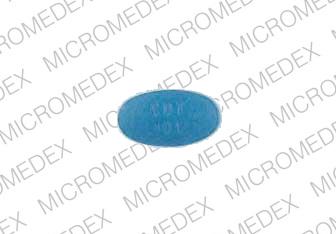Caduet Dosage
Generic name: AMLODIPINE BESYLATE 5mg, ATORVASTATIN CALCIUM TRIHYDRATE 10mg
Dosage form: tablet, film coated
Drug classes: Antihyperlipidemic combinations, Miscellaneous antihypertensive combinations
Medically reviewed by Drugs.com. Last updated on Jun 4, 2024.
CADUET
Dosage of CADUET must be individualized on the basis of both effectiveness and tolerance for each individual component in the treatment of hypertension/angina and hyperlipidemia. Select doses of amlodipine and atorvastatin independently.
CADUET may be substituted for its individually titrated components. Patients may be given the equivalent dose of CADUET or a dose of CADUET with increased amounts of amlodipine, atorvastatin, or both for additional antianginal effects, blood pressure lowering, or lipid-lowering effect.
CADUET may be used to provide additional therapy for patients already on one of its components. CADUET may be used to initiate treatment in patients with hyperlipidemia and either hypertension or angina.
Important Dosage Information
Take CADUET orally once daily at any time of the day, with or without food.
Amlodipine
The usual initial antihypertensive oral dosage of amlodipine is 5 mg once daily, and the maximum dose is 10 mg once daily.
Pediatric (age > 6 years), small adult, fragile, or elderly patients, or patients with hepatic insufficiency may be started on 2.5 mg once daily and this dose may be used when adding amlodipine to other antihypertensive therapy.
Adjust dosage according to blood pressure goals. In general, wait 7 to 14 days between titration steps. Titration may proceed more rapidly, however, if clinically warranted, provided the patient is assessed frequently.
Angina The recommended dosage of amlodipine for chronic stable or vasospastic angina is 5–10 mg, with the lower dose suggested in the elderly and in patients with hepatic insufficiency. Most patients will require 10 mg for adequate effect.
Coronary Artery Disease The recommended dosage range of amlodipine for patients with CAD is 5–10 mg once daily. In clinical studies, the majority of patients required 10 mg [see Clinical Studies (14.4)].
Pediatrics The effective antihypertensive oral dose of amlodipine in pediatric patients ages 6–17 years is 2.5 mg to 5 mg once daily. Doses in excess of 5 mg daily have not been studied in pediatric patients [see Clinical Pharmacology (12.3) and Clinical Studies (14.1)].
Atorvastatin
Assess LDL-C when clinically appropriate, as early as 4 weeks after initiating atorvastatin, and adjust the dosage if necessary.
Recommended Dosage in Adult Patients
The recommended starting dosage of atorvastatin is 10 mg to 20 mg once daily. The dosage range is 10 mg to 80 mg once daily. Patients who require reduction in LDL-C greater than 45% may be started at 40 mg once daily.
Recommended Dosage in Pediatric Patients 10 Years of Age and Older with HeFH
The recommended starting dosage of atorvastatin is 10 mg once daily. The dosage range is 10 mg to 20 mg once daily.
Recommended Dosage in Pediatric Patients 10 Years of Age and Older with HoFH
The recommended starting dosage of atorvastatin is 10 mg to 20 mg once daily. The dosage range is 10 mg to 80 mg once daily.
Dosage Modifications Due to Drug Interactions
Concomitant use of atorvastatin with the following drugs requires dosage modification of atorvastatin [see Warnings and_5.1_Myopathy_andPrecautions (5.1) and Drug Interactions (7.1)].
Anti-Viral Medications
• In patients taking saquinavir plus ritonavir, darunavir plus ritonavir, fosamprenavir, fosamprenavir plus ritonavir, elbasvir plus grazoprevir or letermovir, do not exceed atorvastatin 20 mg once daily.
• In patients taking nelfinavir, do not exceed atorvastatin 40 mg once daily.
Select Azole Antifungals or Macrolide Antibiotics
• In patients taking clarithromycin or itraconazole, do not exceed atorvastatin 20 mg once daily.
For additional recommendations regarding concomitant use of atorvastatin with other anti-viral medications, azole antifungals or macrolide antibiotics, [see Drug Interactions (7.1)].
More about Caduet (amlodipine / atorvastatin)
- Check interactions
- Compare alternatives
- Pricing & coupons
- Reviews (3)
- Drug images
- Latest FDA alerts (2)
- Side effects
- During pregnancy
- Generic availability
- FDA approval history
- Drug class: antihyperlipidemic combinations
- En español
Patient resources
Professional resources
Related treatment guides
Further information
Always consult your healthcare provider to ensure the information displayed on this page applies to your personal circumstances.


